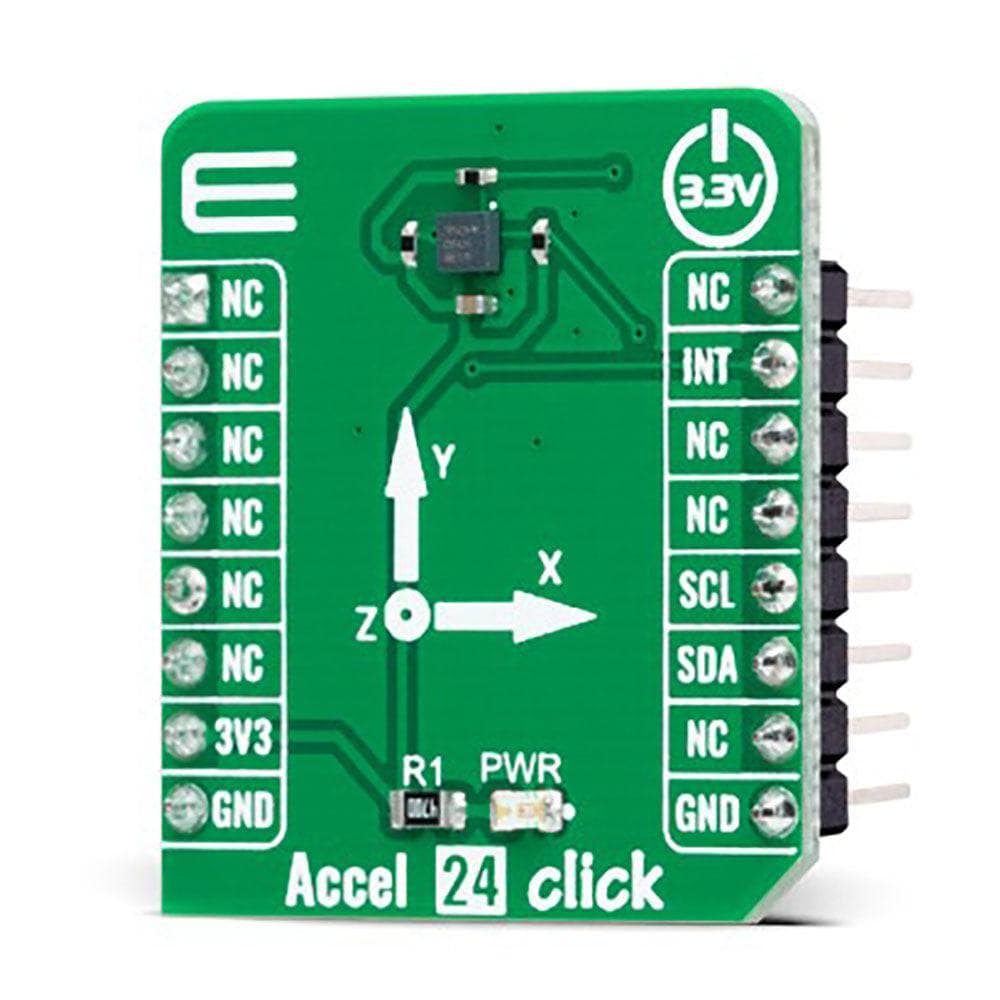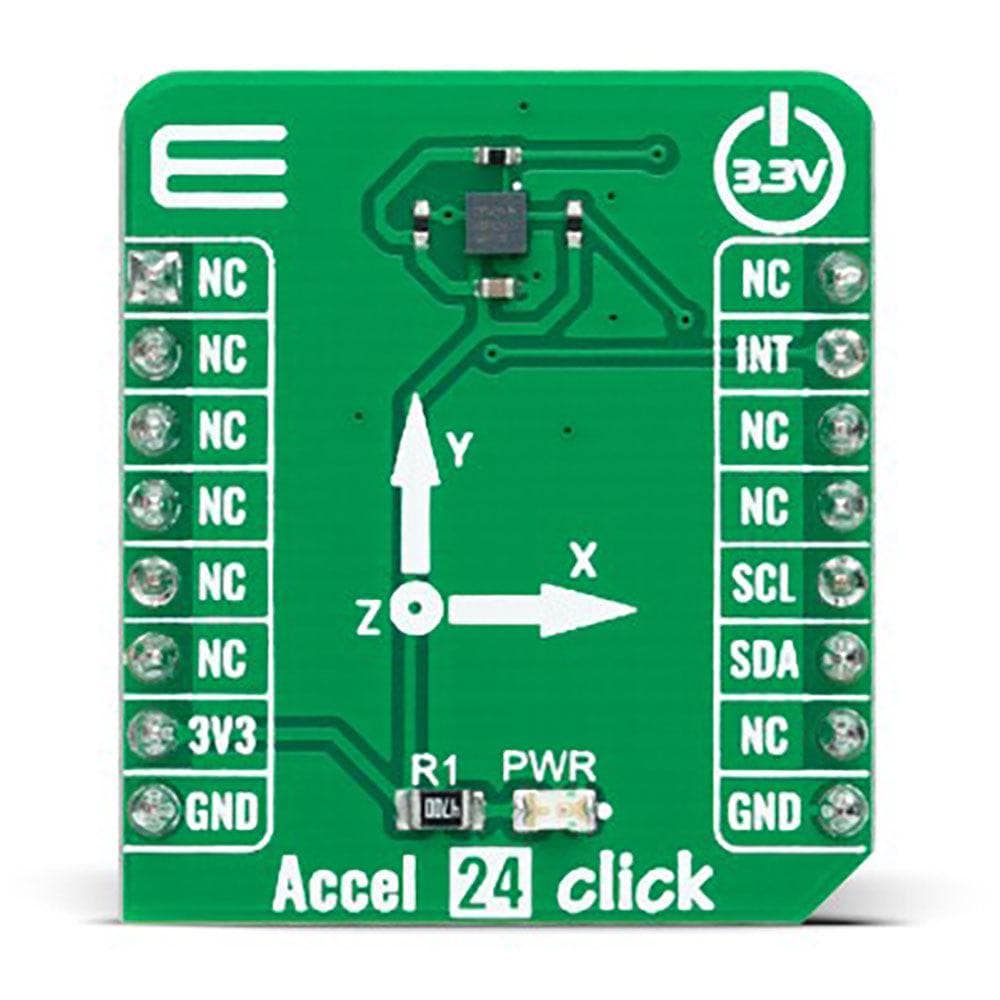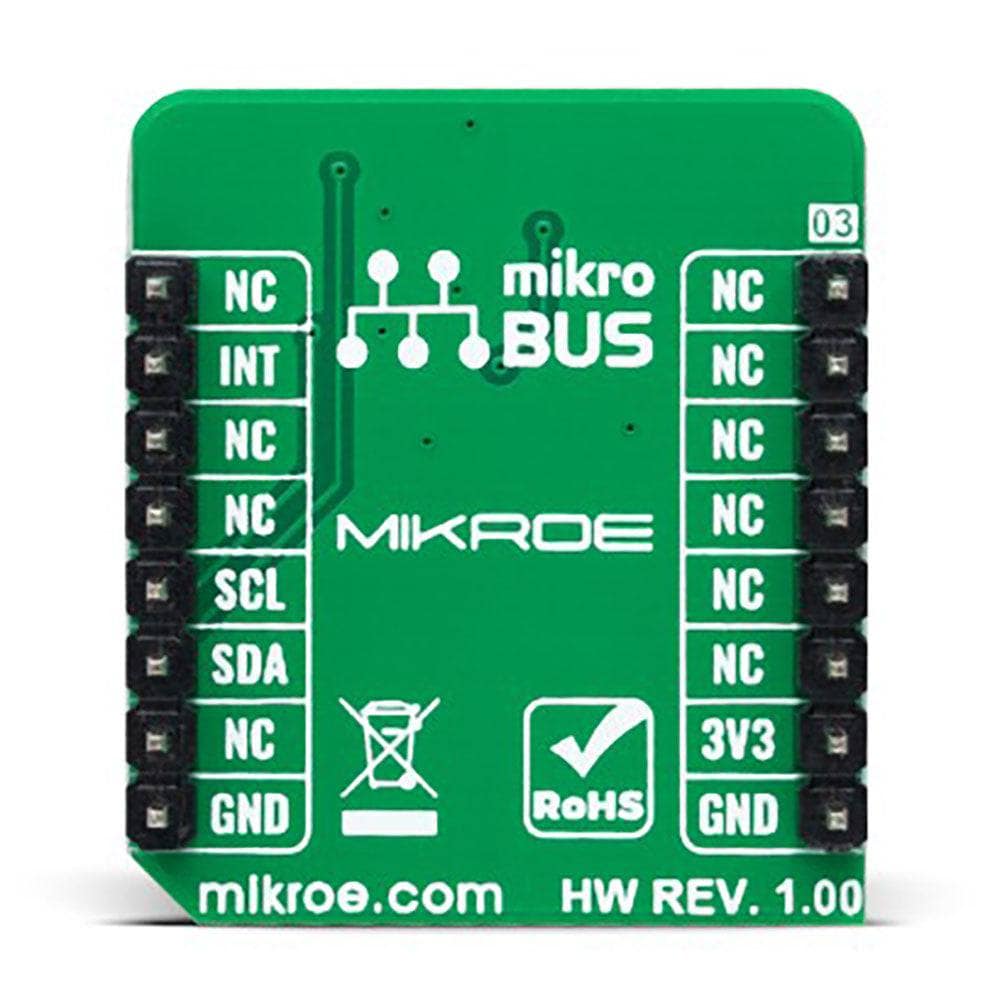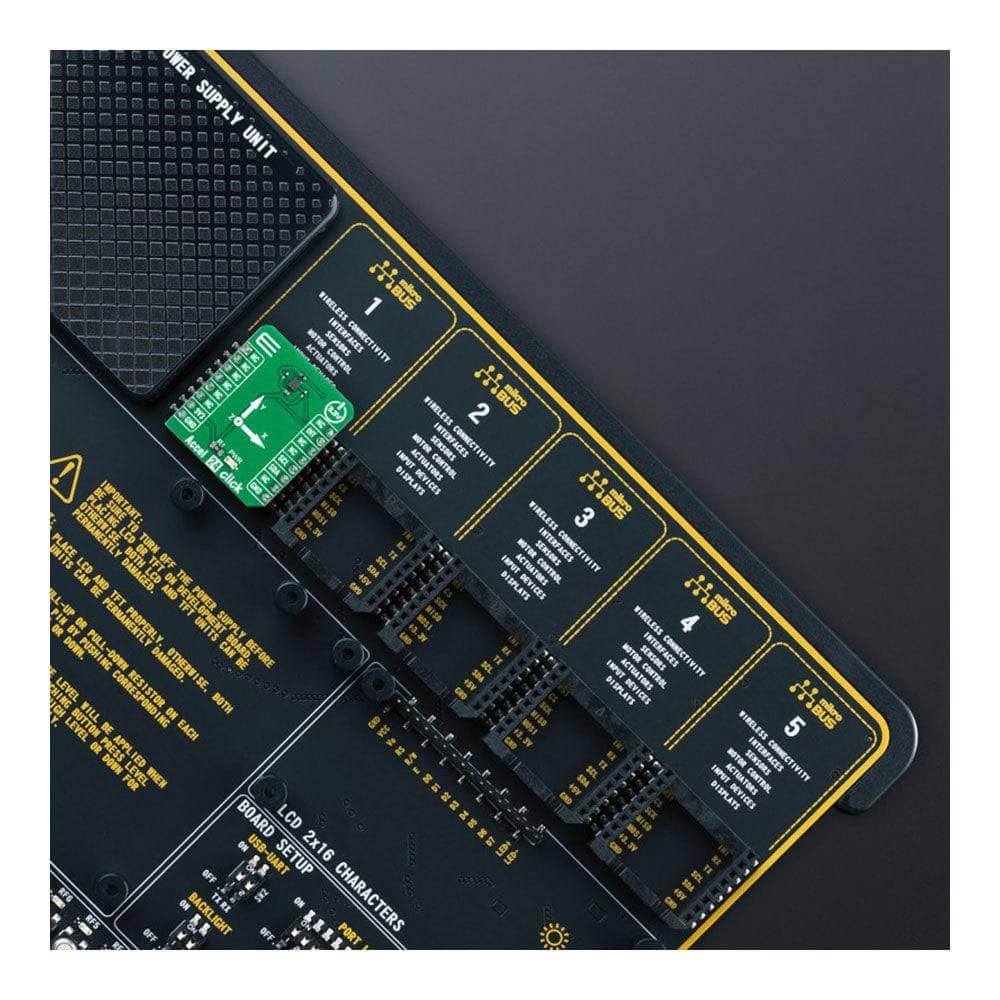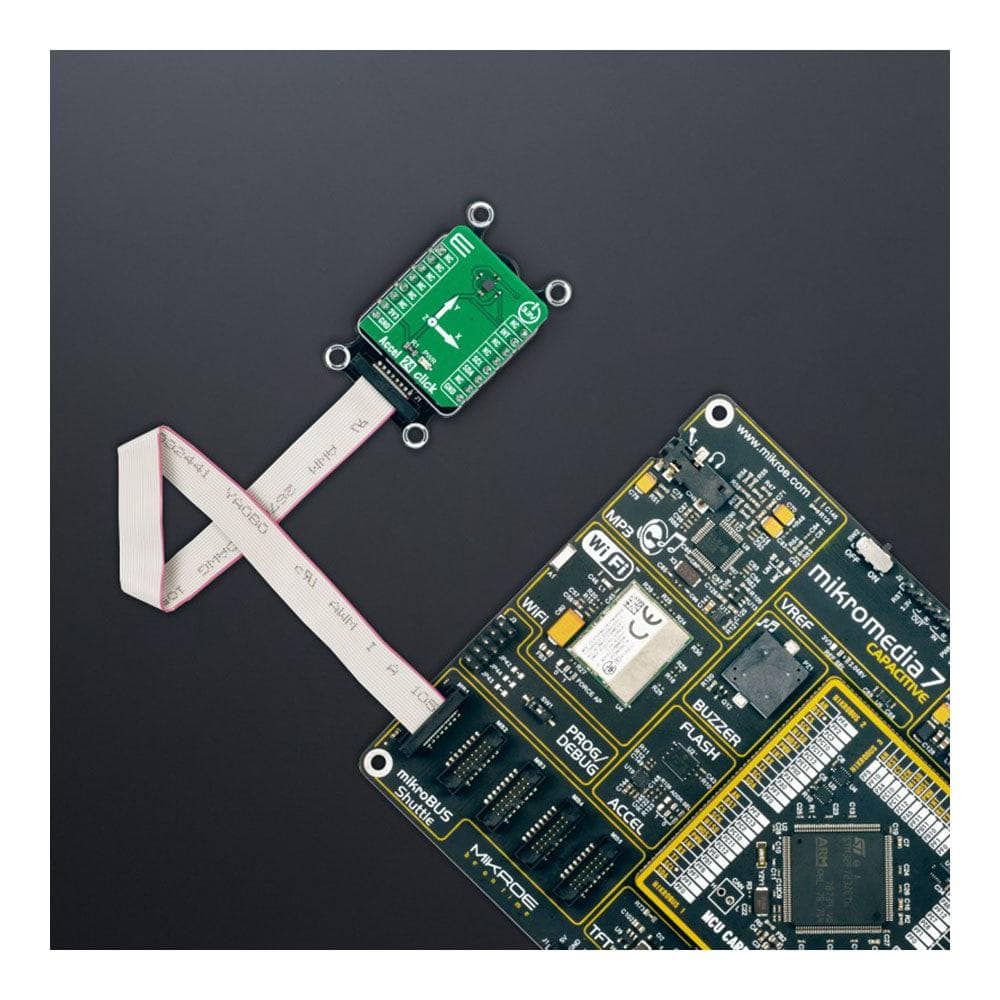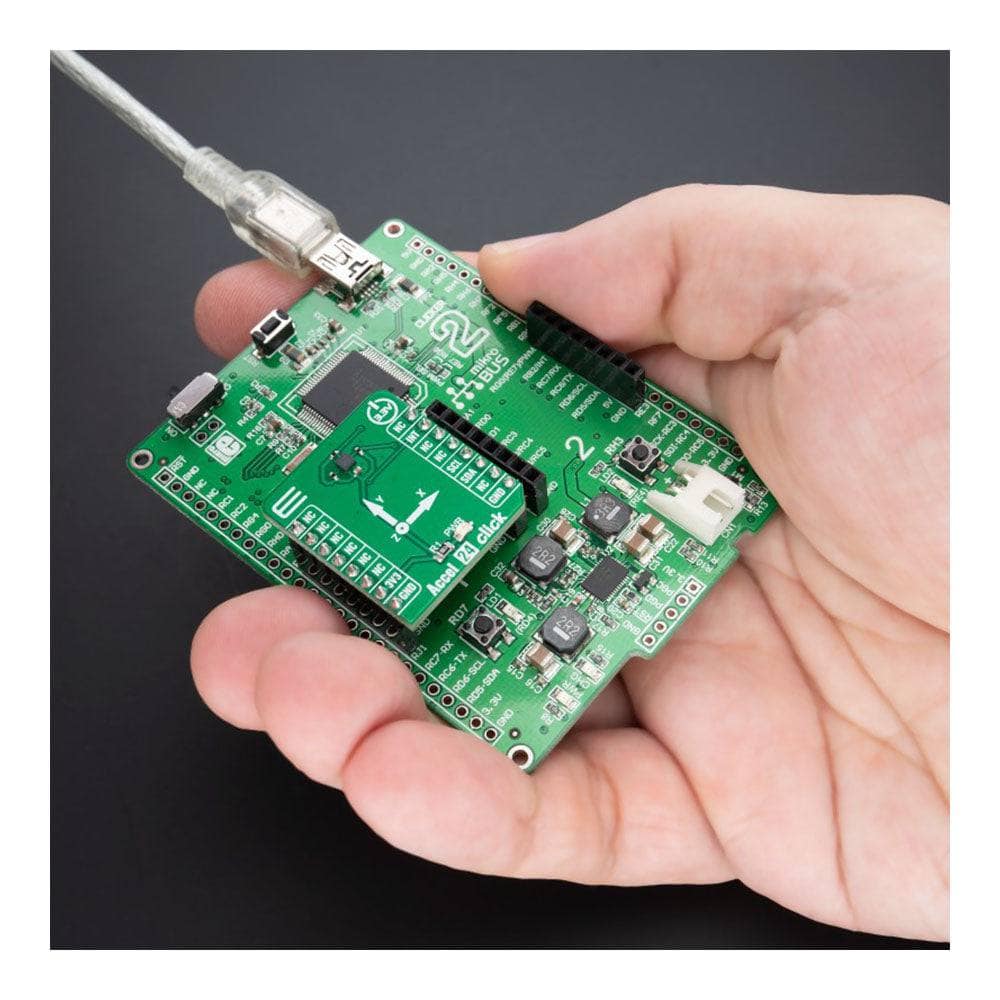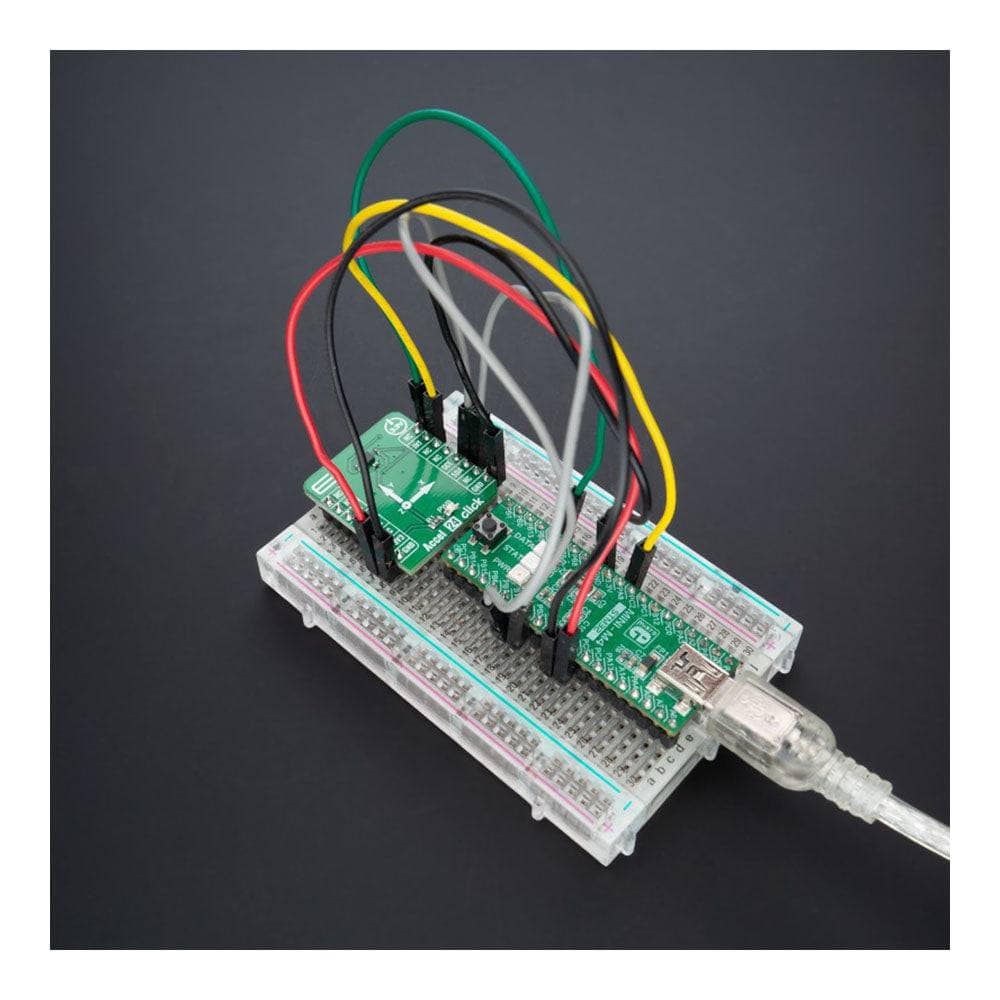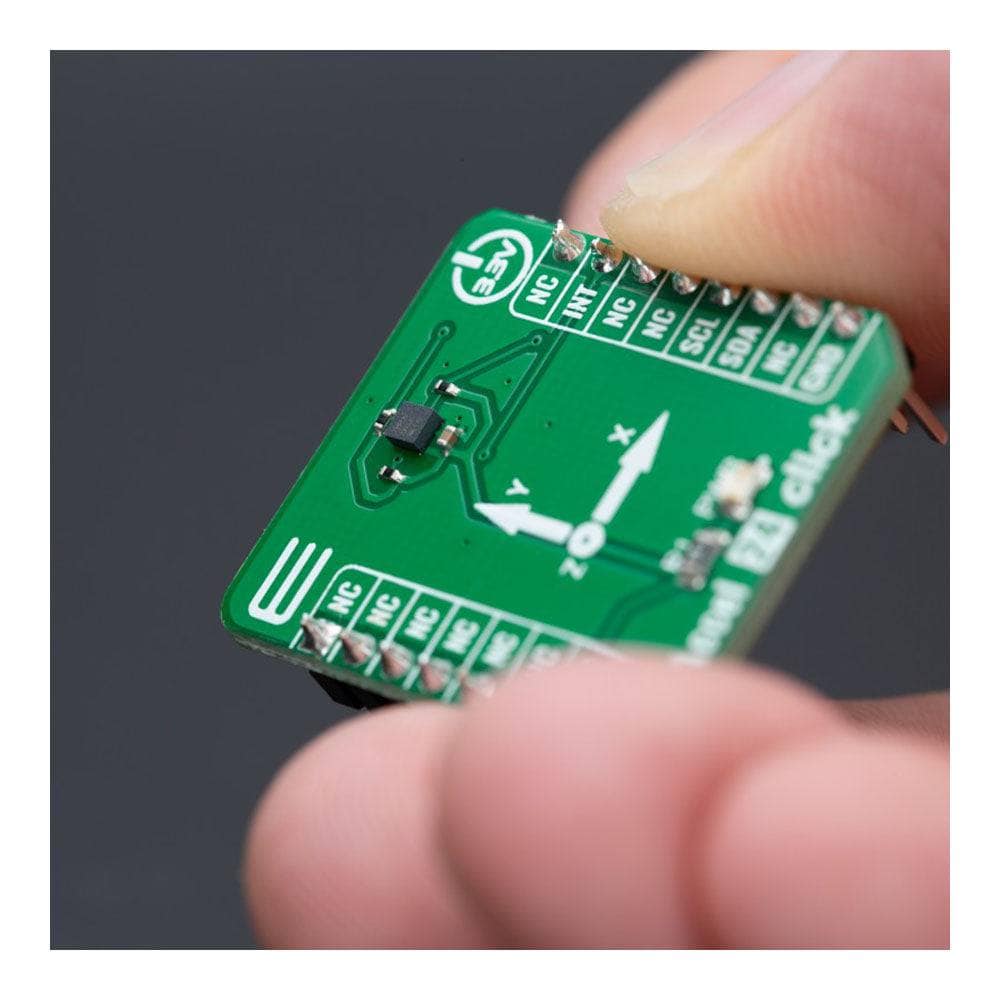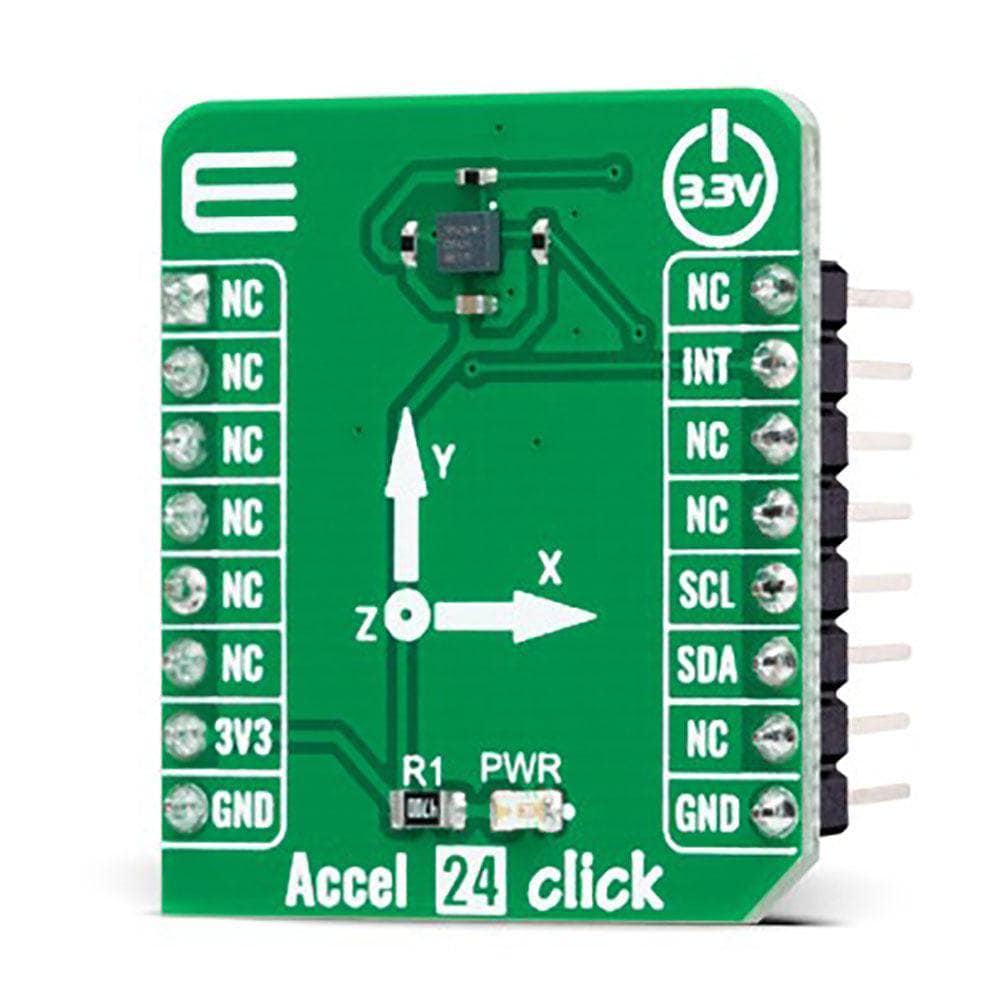
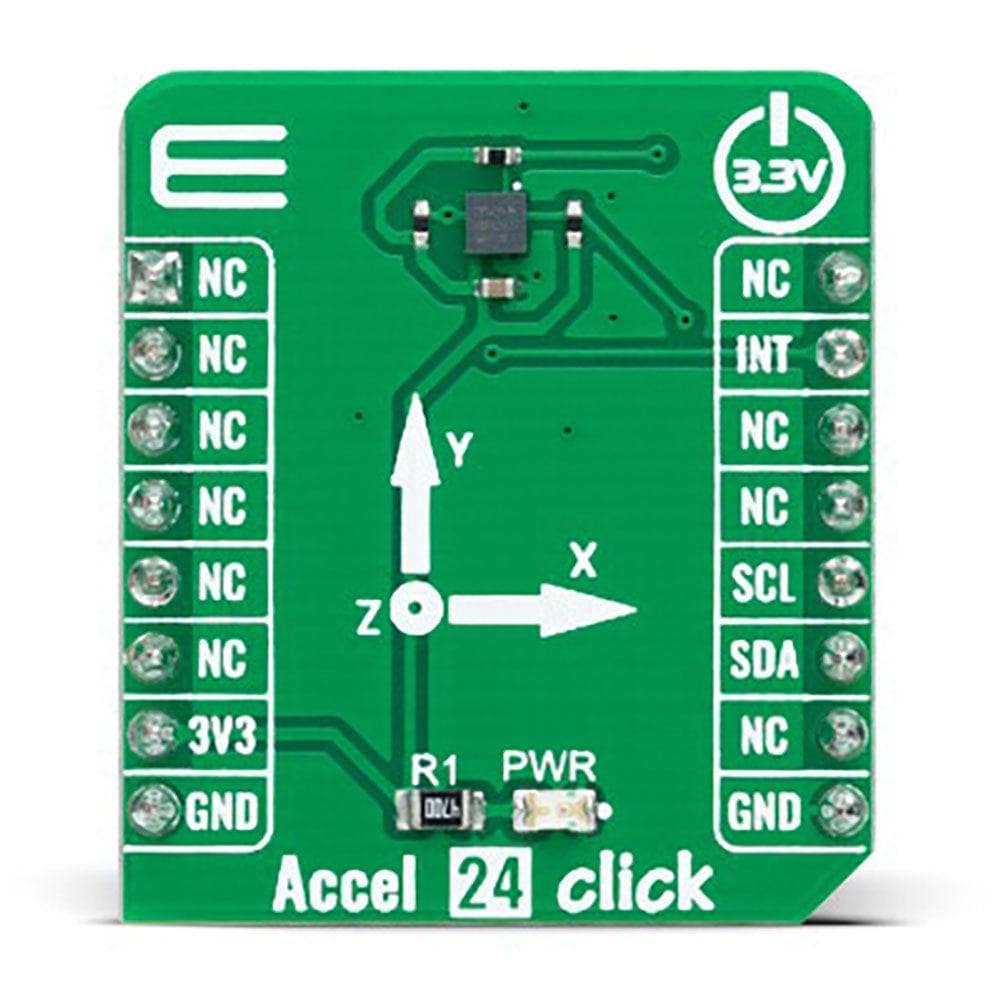
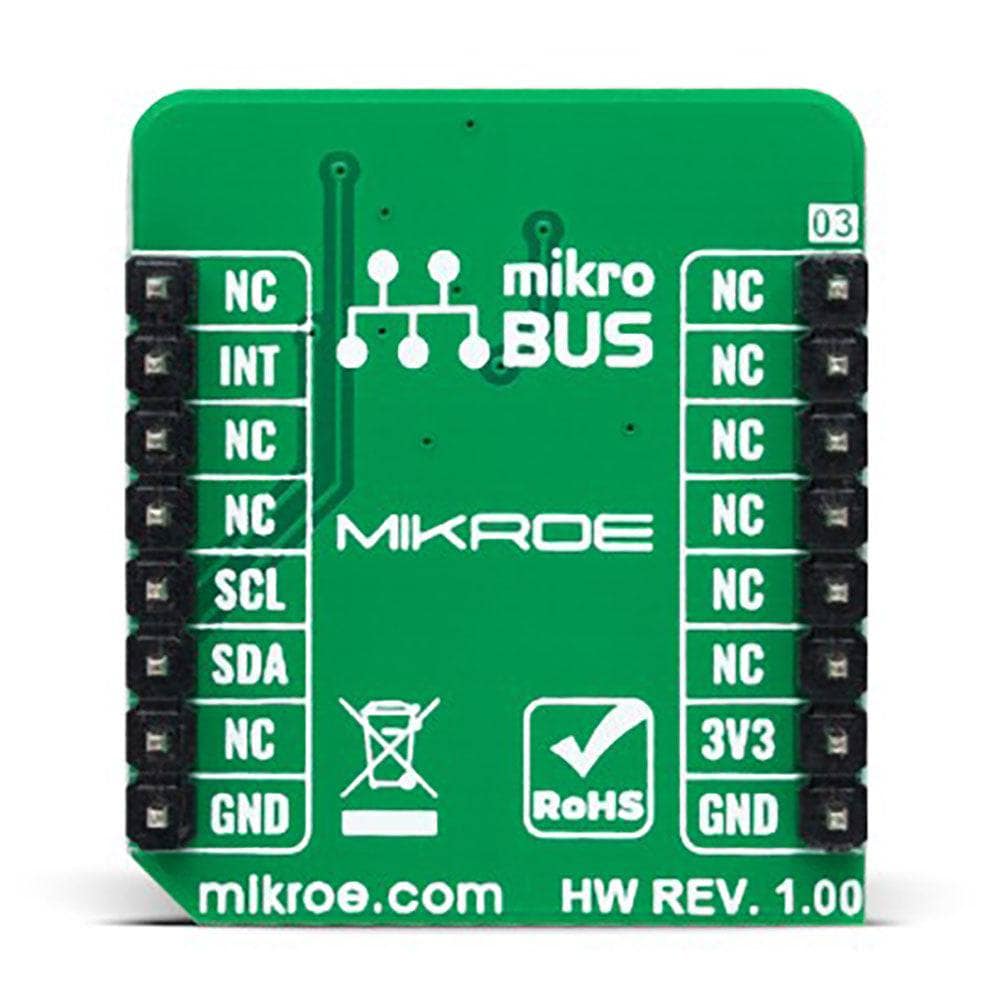
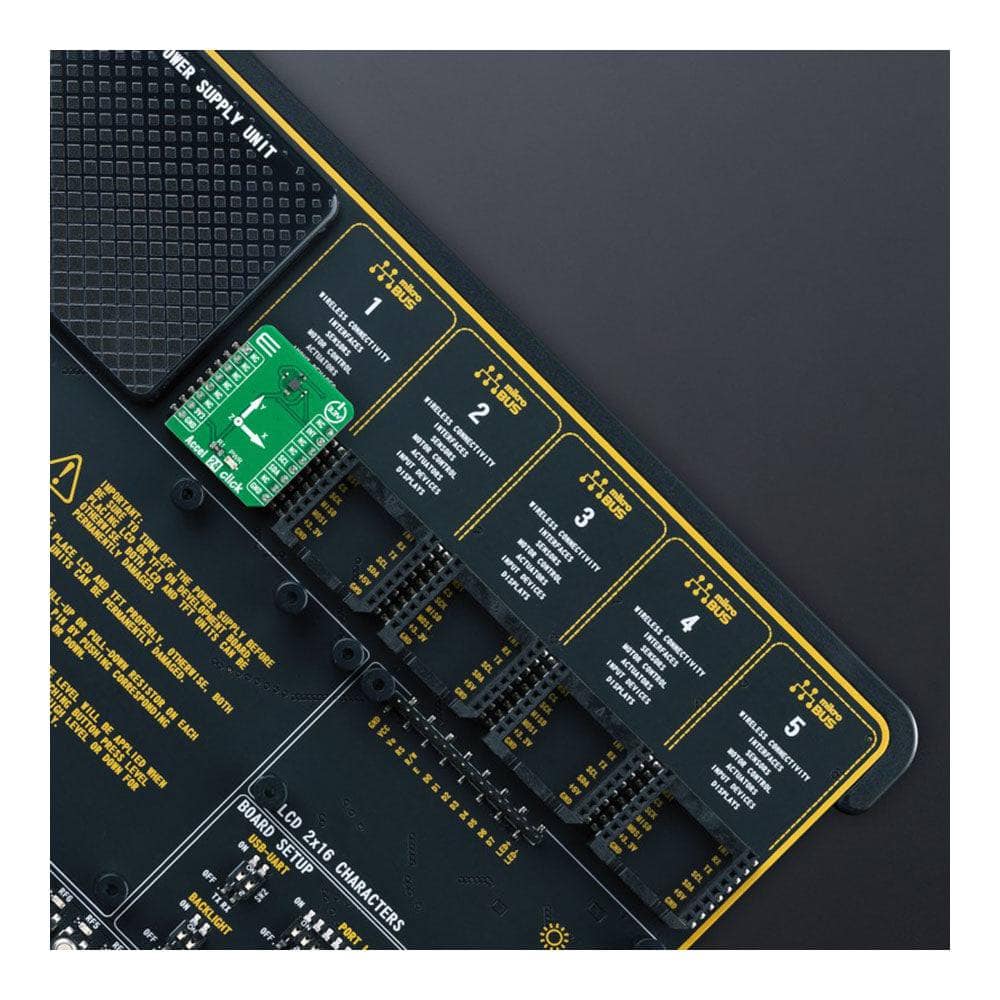
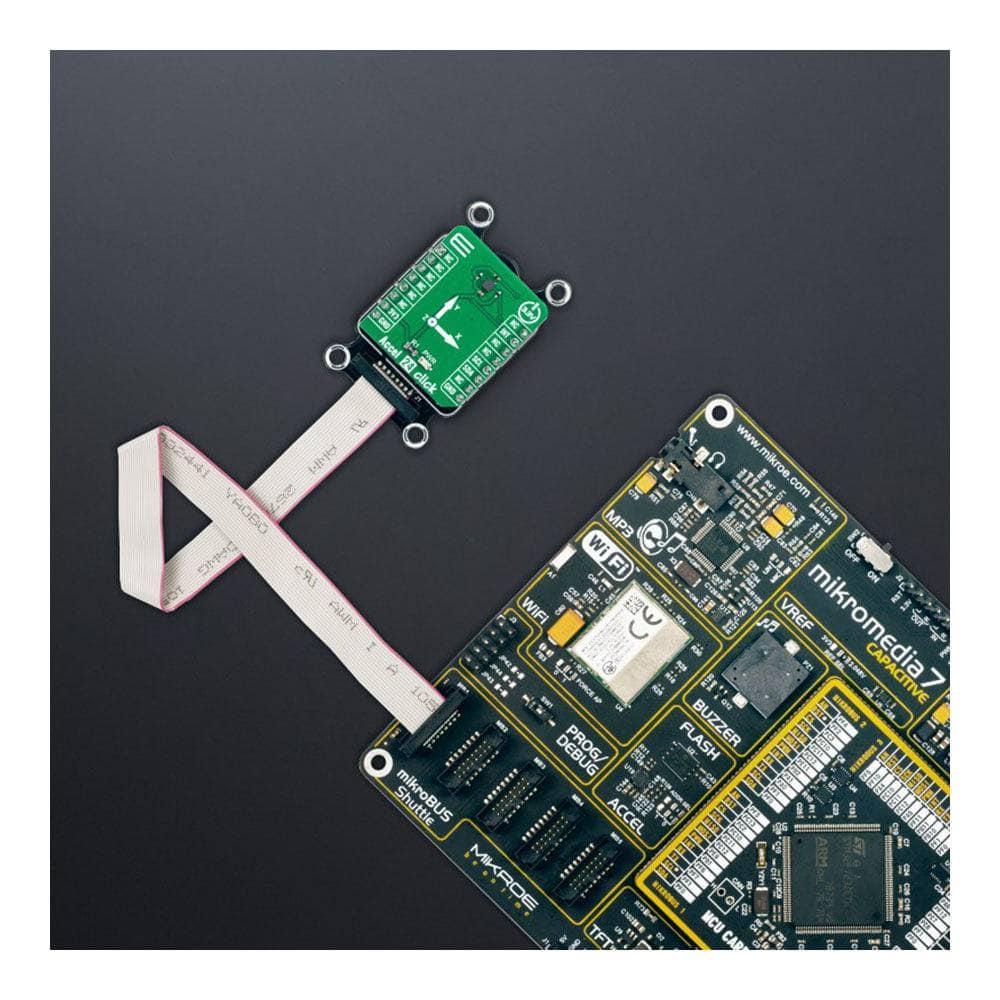
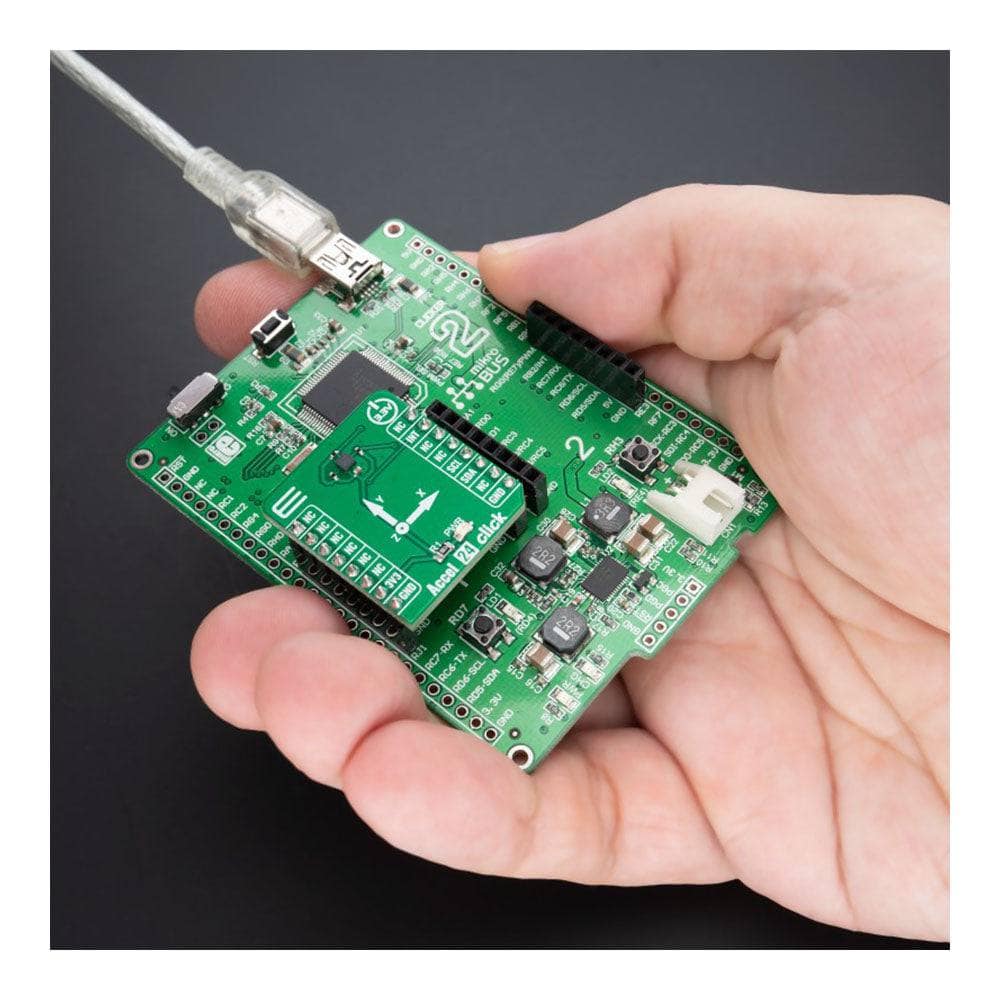
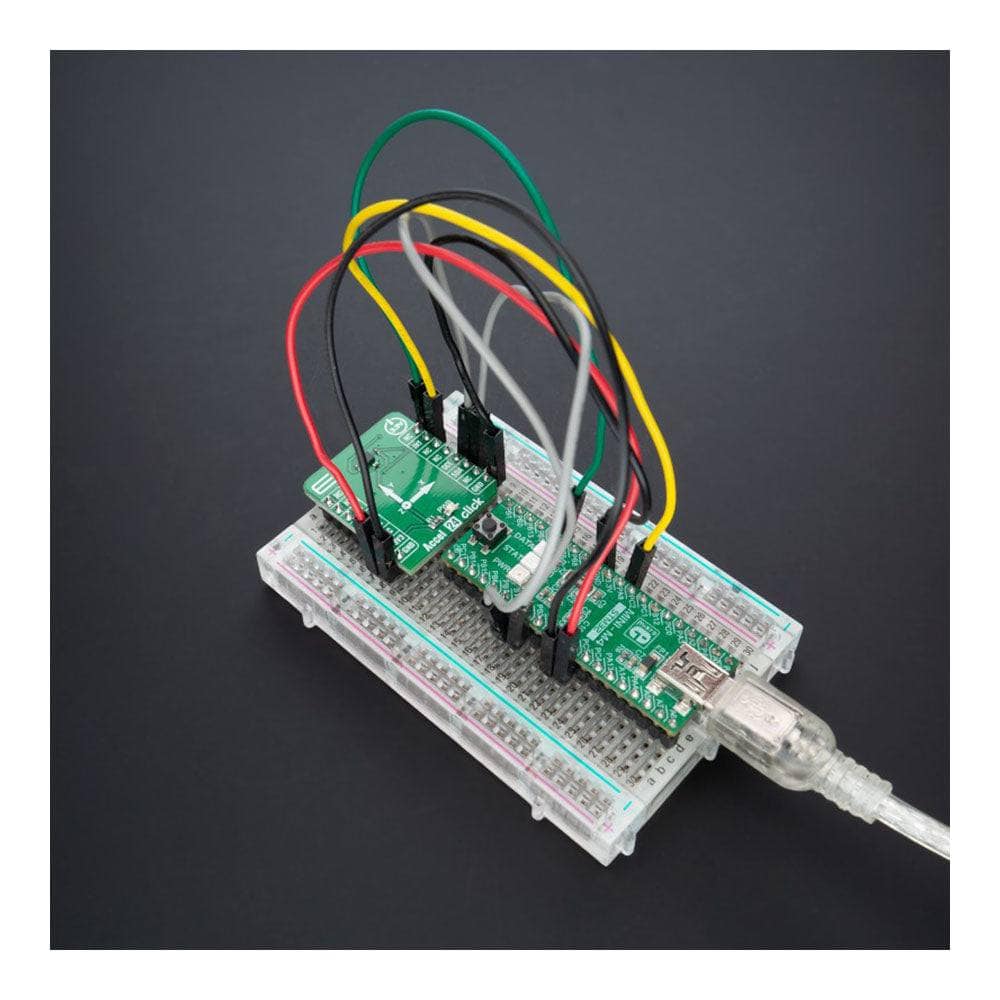
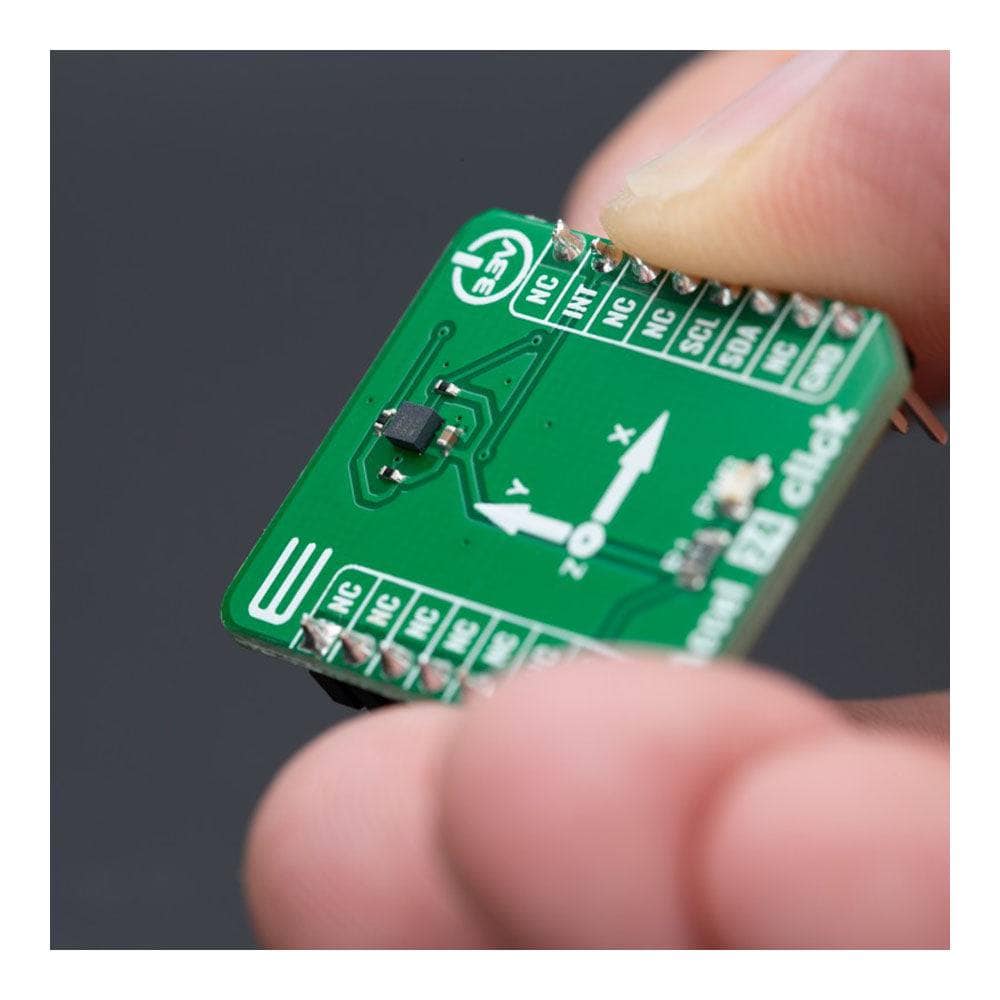
Key Features
Overview
The Accel 24 Click Board™ is a compact add-on board with an acceleration sensor. This board features the MXC6655XA, a 12-bit three-axis accelerometer from MEMSIC. It allows selectable full-scale acceleration measurements in ranges of ±2g, ±4g, or ±8g in three axes with a compatible I2C serial interface with 400KHz fast mode operation. Alongside low offset and temperature signal with high accuracy, the MXC6655XA also detects six orientation positions, X/Y shake, and shake directions with an appropriate interrupt signal for these states. This Click board™ is suitable for a wide range of information appliances, consumer electronics, household safety applications, and many more.
The Accel 24 Click Board™ is supported by a mikroSDK-compliant library, which includes functions that simplify software development. This Click board™ comes as a fully tested product, ready to be used on a system equipped with the mikroBUS™ socket.
Downloads
Das Accel 24 Click Board™ ist eine kompakte Zusatzplatine mit einem Beschleunigungssensor. Diese Platine verfügt über den MXC6655XA, einen 12-Bit-Dreiachsen-Beschleunigungsmesser von MEMSIC. Es ermöglicht wählbare Vollskalen-Beschleunigungsmessungen in Bereichen von ±2 g, ±4 g oder ±8 g in drei Achsen mit einer kompatiblen seriellen I2C-Schnittstelle mit 400-kHz-Schnellmodusbetrieb. Neben einem niedrigen Offset und einem Temperatursignal mit hoher Genauigkeit erkennt das MXC6655XA auch sechs Ausrichtungspositionen, X/Y-Verwacklung und Verwacklungsrichtungen mit einem entsprechenden Unterbrechungssignal für diese Zustände. Dieses Click Board™ ist für eine Vielzahl von Informationsgeräten, Unterhaltungselektronik, Haushaltssicherheitsanwendungen und vielem mehr geeignet.
Das Accel 24 Click Board™ wird von einer mikroSDK-kompatiblen Bibliothek unterstützt, die Funktionen enthält, die die Softwareentwicklung vereinfachen. Dieses Click Board™ wird als vollständig getestetes Produkt geliefert und ist bereit für den Einsatz auf einem System, das mit der mikroBUS™-Buchse ausgestattet ist.
| General Information | |
|---|---|
Part Number (SKU) |
MIKROE-5336
|
Manufacturer |
|
| Physical and Mechanical | |
Weight |
0.02 kg
|
| Other | |
Country of Origin |
|
HS Code Customs Tariff code
|
|
EAN |
8606027387104
|
Warranty |
|
Frequently Asked Questions
Have a Question?
Be the first to ask a question about this.

